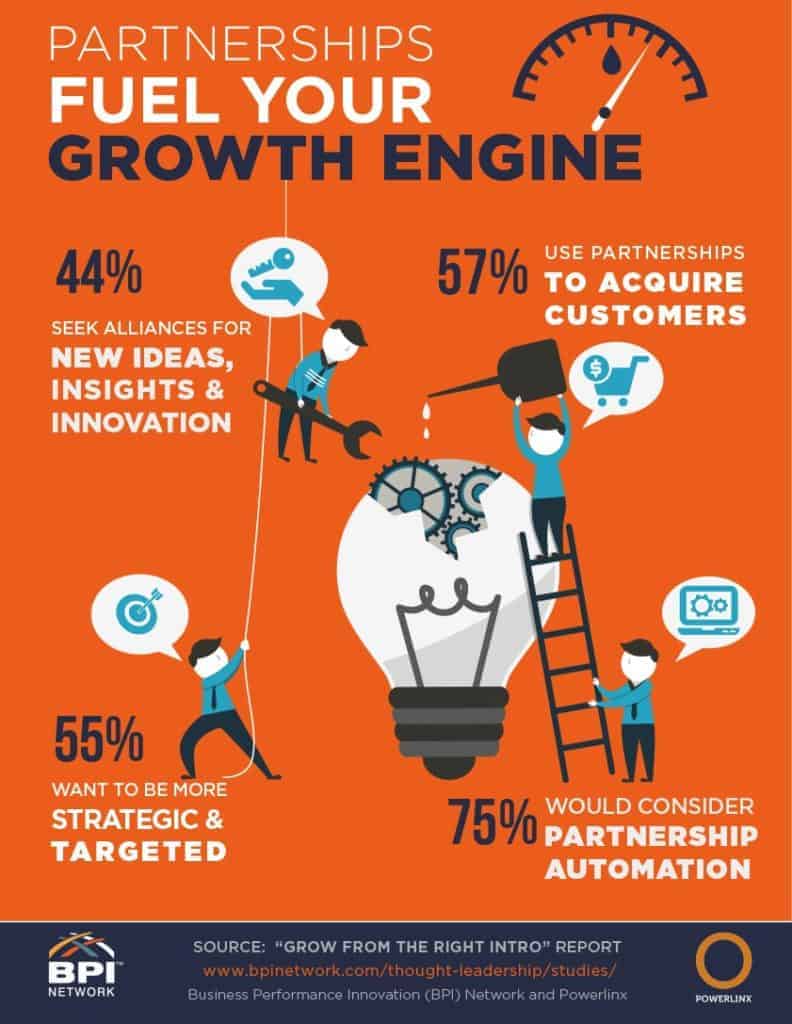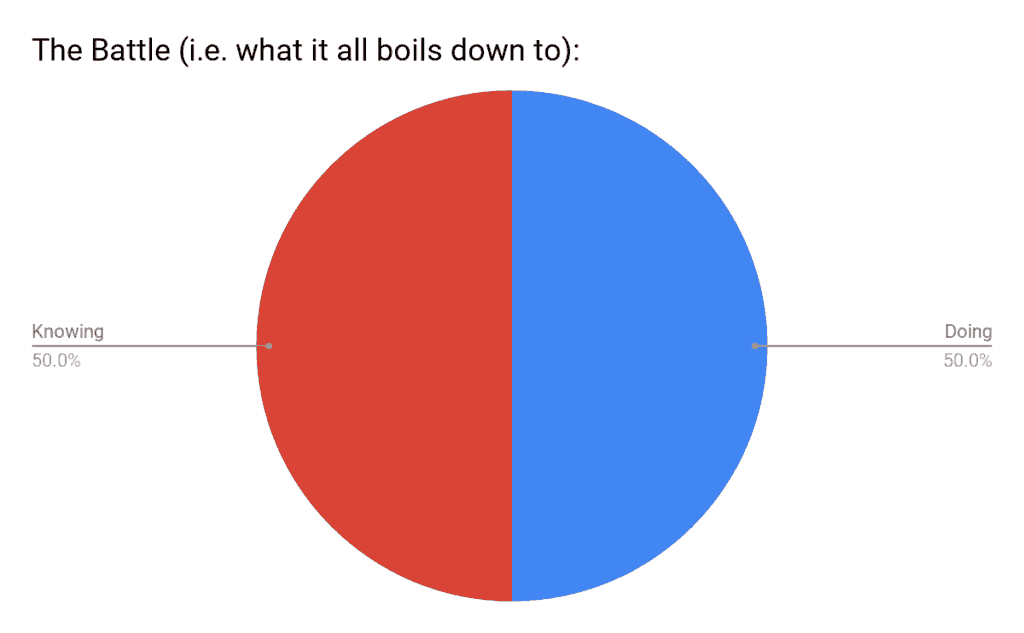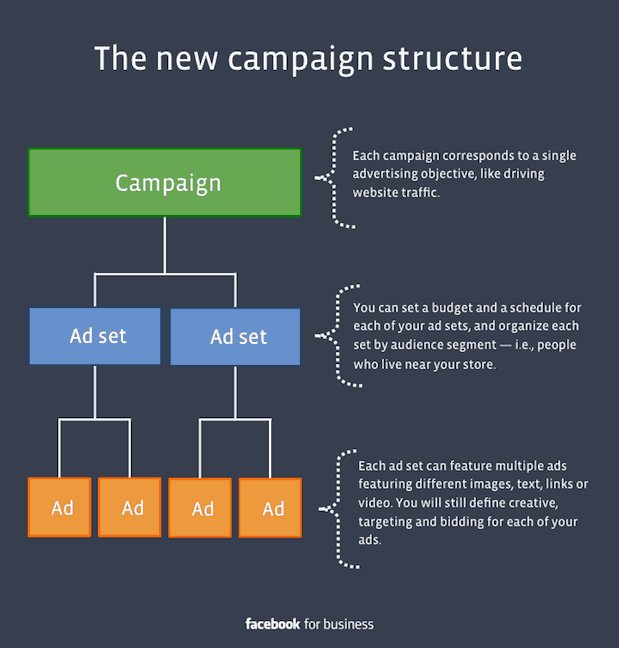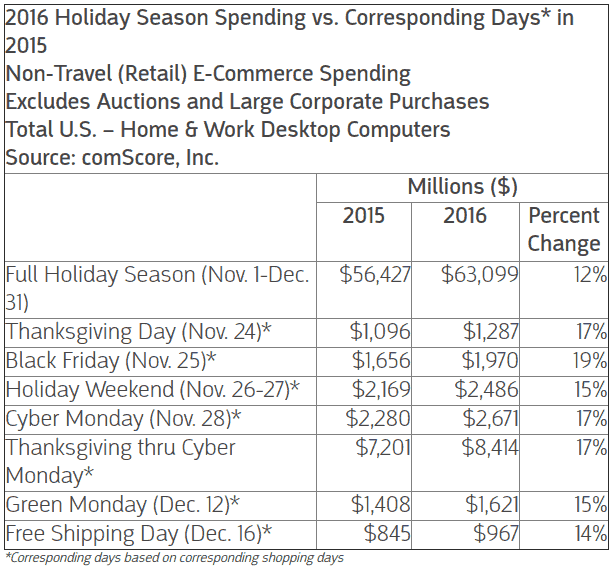
Make no mistake about it, the holiday season is upon us. In fact, we are already steeped in it.

source: National Retail Federation
In the above graphic, we see that 55% of consumers begin researching their holiday purchase before November. So, as far as marketing and holiday campaigns are concerned, many businesses are already a couple months into the process. If you haven’t started yet, it is time to kick it into gear.
Fortunately, it is not too late to put together a solid plan of attack. But before you jump in and just start going for it, you need to be calculated in your actions. We have created a road map— a checklist, if you will— to help you navigate the intricacies associated with developing an effective holiday marketing strategy. Increase your chances for success and improve ROI when you heed the advice we are about to share with you. Our goal is to help you survive and thrive during this chaotic time of the year.
Preparation before action.

The best way to ensure you will be able to weather the storm of snags, expenses, and changes is to be prepared for them, in advance. Just like you need a solid business plan before launching your business, you need to have a marketing plan in place before you embark on your holiday campaign.
Questions you need to be thinking about and answering:
- What are your goals?
- What is your budget?
- What channels will you market on?
- What collateral needs to be created?
- What promotions will you offer?
- How will you monitor your progress and measure results?
Map it all out. Put it on a calendar. In fact, we highly recommend you take a look at this brilliant Holiday Digital Marketing Calendar put together by the good folks over at AdRoll. The more details you include, the better prepared you will be. Enable success through precise preparation.
Don’t start from scratch.
When it comes to designing a marketing plan and dissecting thematic material found in Dickens’ A Christmas Carol— hey, we are talking about the Christmas shopping season, so my cut me some slack for the cheesy, yet timely, analogy I’m about to drop— you need to revisit your past before you can act in the present to prepare for your future. If you have done a holiday campaign in the past, it’s time to dust it off and scrutinize it. If you haven’t, don’t sweat it— you can take a look at any previous campaigns or marketing efforts you have implemented in the past.
The key here is to analyze real facts figures that are directly related to your company. With a critical and objective perspective, you need to identify what has worked, and what has failed, in the past. Though you want to get an overall picture, it is important to consider the following categories on a more granular level:
Content type. Blogs, articles, videos, short-form articles, long-form pieces, etc.— what have you used in the past? What seemed to deliver results? Can anything be recycled or re-branded to work for this season?
Demographic. You should definitely know the audience you are targeting. Another discoverable statistic is to determine what demographic has responded to your marketing efforts in the past? Is it the “right” demographic? What could you do differently to engage different segments of your demographic?
Social Integration. How impactful were your efforts via social media? Did people share your content? Did you forge any relationships with influencers?
Holiday relevance. How important is the holiday shopping season to your business? For example, if you are a restaurant, you may offer some promotional menu items or coupons, but you are probably not banking on Black Friday sales to make or break your business, like some retailers are. Consequently, an aggressive email and/or advertising campaign is probably not in your best interest. Determine the most effective means of communicating your message to your audience.
Partners. If you have ever run any partnership campaigns in the past, analyze the results to determine which ones are worthy of renewing. If you have never worked with partners, now is the time to consider opting for a joint campaign. BPI Network put together an informative infographic about partnerships, and we’d like to share it with you now:

source: BPI Network
Forecast calls for a brainstorm.

By now, you have developed, at the very least, an initial idea of how you are going to proceed with this year’s holiday campaign. You know what to keep, and what to weed out. Now, here comes the exciting part: creating anew. This is when you get to throw all your ideas up against the proverbial wall and focus on the gems that stick. Collaborate with team members. Take chances. Build on what you know works. Trust your instincts. This part can be the most fun portion of the process, but it can also be daunting. The best way to get through it is to dive in and go for it. Don’t worry— there is a safety net. That is where the next section comes into play…
Test. Retest. Test again.
You are all set to go. Now, before you get too far down any one rabbit hole, you need to start rolling out content to test its effectiveness. Create “mini” or “micro” campaigns as soon as possible (especially since Black Friday is right around the corner— yikes!!!).
The easiest and quickest way to get a barometer reading is on social media. It is also the best place to test rich media content. Pictures on Instagram, videos on Facebook, and holiday themed slogans on Twitter are all great ways to quickly release content and get nearly instantaneous feedback. AdEspresso by Hootsuite put together an awesome Beginner’s Guide to A/B Testing Facebook Ads that we highly recommend you check out (even if you are not a beginner).
Once you’ve done a handful of posts, you can quickly analyze their performance and determine their overall effectiveness. Are your efforts penetrating your target audience? Is the content engaging consumers and calling them to action? Measure the results, and make the necessary adjustments before launching your full campaign(s).
One thing to always be mindful of is to make certain you are creating the appropriate content for the appropriate channels and distribution channels. If you make a compelling piece of content, but broadcast it to the wrong audience on the wrong platform, you will fail to achieve traction. It all boils down to knowing and doing. By the process of deduction and a little wisdom from G.I. Joe, we can conclude that knowing is half the battle.

Variety is the spice of the season.
Your campaign is set, and you are ready to rock. Though you want to stay focused on delivering the message, variety is a key element to extending the lifespan of your digital marketing endeavors. Create different iterations of the same content pieces. Introduce blog topics with clever questions, highlight different sections of articles in social posts, devise subtle variations on titles, subtitles, sub-subtitles, slogans, and so on. Facebook for Business has simple graphic that neatly demonstrates the suggested ad variation flow and development for your campaign:

Recognize that your audience is going to be constantly bombarded with an onslaught of ads throughout the holiday season. If you keep reposting the same stale material, their eyes will glaze over and your message will be lost. Even worse, they will become wary of your company and dismiss your content as the soul-less secretions of a spam bot automaton. Nobody wins when that happens, except for the Rap-Rock MC that reads this blog and renames herself “Spam Bot Automaton.”
Single business seeks connected influencer for a relationship with benefits.

Reach out to influencers and ask them to do what they do best: spread the good word about your company. A recent survey conducted over at Bitly found that 92% of consumers— so, factoring in a little margin of error, that equates to, basically, everyone— prefer and trust recommendations from complete strangers (i.e. other consumers) and influencers over the ones put out by brands.
Begin by tapping the key players in your immediate network to get the buzz humming. Expand your search and start soliciting influencers that will connect with both your product and demographic. Remember to go after influencers on multiple social networks. It is important that you start doing this as soon as possible. During the holiday season, influencers get bombarded with requests from multiple companies. You want to make sure you give them enough time and leeway to properly promote your product/service/brand.
There’s gold in them thar Internets— get prospectin’!
What type of audience could be better than your already awesome, target audience? A bigger target audience! There are billions of users with digital profiles throughout the world, meaning the possibilities of connecting with them are virtually limitless.
Allocate a portion of your marketing budget specifically for prospecting new, potential customers. Who do you want to reach today? When you know the answer, you will be able to concoct a campaign that caters to attracting new clients.
The best part of the holiday season is people are actively searching for different and new products and companies to purchase gifts from. Take advantage of this reality by infusing festive themes in all of your marketing and advertising content. Though it may seem obvious, we want to reiterate the value of offering promotions and special pricing to incentivize new consumers to engage.
Mobile. So hot right now. Mobile.
For matters of grave importance, it is always recommended to seek inspiration, draw parallels, and gather wisdom from the pithy utterances of Jacobim Mugatu. Mobile is definitely such a matter. But don’t just take our word for it…
According to this Google research report:
- 75% of users prefer mobile-friendly sites
- 96% of users have encountered sites not designed for mobile
- 74% of users are likely to return to mobile-friendly sites
- 67% of users are more likely to buy from mobile-friendly sites
- 50% will search elsewhere if your site is not mobile-friendly, even if they like your company
“Those are some great stats. So what do they all mean, in regards to a holiday campaign?”
To put it simply and bluntly, you need to deliver a robust mobile website focused on maximizing engagement through an enhanced user experience. Design a dedicated mobile site or make sure your current site is responsive. Ideally, you have an App. If not, you should sincerely consider having one made. Today, there really is no excuse for forgoing an App for your company, as it is the ultimate solution for engaging your audience at an affordable price.
But having the mobile friendly site and App up and running are only the first steps in the process. You also need to make sure that all the content is optimized for mobile, and that you are taking full of advantage of mobile technology to broadcast your holiday marketing campaigns. Push notifications for holiday sales, “Seasons Greetings” promotional messages via text, free gifts for those who check in, and so on— this is your opportunity to really capture the attention of your audience with festive holiday cheer. Get creative. Most importantly, get on it!
Use the user.
We mean this in the nicest possible way. If you have any type of web and social presence, you have cultivated a user following. Even if you have done nothing online, if you are a legitimate business, chances are someone, somewhere has posted something about your company. So why not use what they are saying to promote your business? Studies have shown that individuals that look at user generated content (UGC) are 161% more likely to convert than those that do not view UGC (via Yotpo).
The following list offers suggestions on how to effectively implement UGC into your holiday marketing strategy.
Reviews. Grab all the positive reviews you can find and post them in creative ways. If you have that are related to the holidays— perhaps from last year’s campaign— get those out immediately. Incentivize customers to leave positive reviews on your holiday promotions, products, and content.
Contests. Holiday inspired contests are an effective way to get UGC, and they really help in promoting your brand. According to holiday marketing research statistics compiled by Adept Marketing, 63% of consumers are likely to share a link to a holiday contest. Have customers submit holiday themed photos— pictures of holiday products, dressed in holiday costumes, their pets dressed as Santa, whatever else you can think of— and watch the shares and likes grow; bringing much wanted and needed positive attention to your brand.
Giveaways. Similar to contests, but consumers don’t need to do anything to be rewarded. If you have something you can give them for free— an accompanying gift with a purchase, free shipping, etc.— it will entice them to convert as well as share your offer with their friends. Who knows, it might even inspire them to right a positive review.
Charity. Altruism is in the air during the holidays. Donate to a cause, and let the world know it via your holiday marketing campaign. Warm, fuzzy feelings do wonders for calling consumers to action.
Optimus Retail: the ultimate game changing transformer.

source: comScore
Everyone not living in a vacuum recognizes that online spending is on the rise, and there is no foreseeable end to this trend. The chart above does an excellent job of illustrating the facts. All retailers, even if they rely on traditional, brick & mortar sales, need to optimize the product and eCommerce pages on their sites. In order to maximize the user experience, it is imperative to design your site with minimal confusion and ambiguity. Accomplish this by:
Providing clear descriptions. Make sure the product descriptions are accurate, detailed, and readable. No one wants sift through something laden with technical jargon and useless gibberish. Provide technical specifications when they are pertinent to driving sales. For example, if I’m buying a t-shirt, I don’t need to know how much it weighs. But when I’m buying a smartphone, the weight of the item might be a deal breaker.
Eliminating questions. Provide a FAQ section on your site. Address issues like shipping costs, taxes, return policies, etc. Consumers want to know what the temperature of the water before they dive into the pool. If they cannot find the information they desire, they will find their way to another resource, namely one of your competitors.
Using quality photos. There is simply no excuse for having poor quality product images. Take professional shots, use proper lighting, and provide multiple angles. If the product is a clothing item, it better be ironed and, ideally, include a picture of it on a model. Photos of the item in it’s natural habitat— a painting on a wall, a sofa in a living room, a bicycle being ridden, etc.— do wonders for conveying the value of the product.
Implementing videos. Video is an excellent medium for telling the whole story. Apart from showcasing the product, you can also explain how to use it, provide a review, and pitch the potential consumer.
Put a bow on it.
There you have it— a lot of great advice on how to approach the holiday marketing season with determination, inspiration, and, hopefully, no trepidation. There is a lot to consider, but you do not need to tackle everything at once. Strategize, follow these steps, and implement the plan, and you will see it really isn’t that bad. The rewards of your efforts will be worth it.
So what are you waiting for? I am plum out of witticisms and motivational tropes. Just go do it. And while you’re at it, may you have a happy, festive, and profitable holiday season this year!







